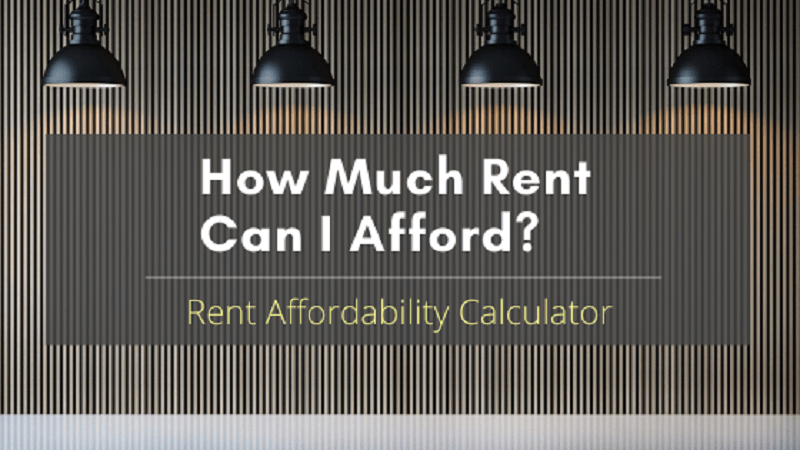Across the U.S., rent prices are increasing by about 1.4 percent, says a national rent report from Apartment List. However, depending on your geographic area, rents are increasing by an even higher percent in some places, and they’re even decreasing in a few other areas. If you’ve ever wondered, ‘How much rent can I afford?’ you’re like many people who have to weigh income with the cost of living for your area, as well as other factors that go into how you choose where you want to live, such as your personal lifestyle, family needs, commute times, and more.
In addition, for landlords, when making a decision on whether to rent to a particular tenant, it’s important to follow basic rent affordability guidelines so you don’t end up renting to a tenant who is going to struggle with paying their rent every month.
There are a few different ways to determine rent affordability. This post will detail those options, as well as some rental price trends that we’re seeing around the country.
Rent Affordability Calculator
This rent affordability calculator is a quick and easy way to estimate how much rent you can afford based on your income. However, we recommend considering the additional information provided in this post to get a clearer picture of rent affordability for your particular situation.
How much rent can I afford?
A general rule of thumb is that the cost of rent should account for only about one-third of your total income. In this calculation, income is your take-home pay after taxes. So, for example, a person who earns $60,000 after taxes is taking home $5,000 per month. By this calculation, that would mean they can afford about $1,667 in rent.
However, other factors come into play when it comes to rent affordability, and so it’s important for tenants to not automatically pass up on a place to live or for landlords to pass up on a tenant based on that one calculation alone.
Factors that Impact Rent Affordability
Other factors that come into play when it comes to rent affordability include the cost of housing in a given area. For a quick example, in locations like the San Francisco Bay Area, where housing is competitive and rental prices are high, it’s not uncommon for renters to pay a higher portion of their income on rent.
This is why it’s important for landlords to consider other aspects of a tenant’s application when making a decision on whether to rent to them. These factors can include credit score, previous rent the tenant paid, as well as how long the tenant has been paying that amount of rent.
As a tenant, if you’re applying for a place to live in a highly competitive area, and you’re willing to pay a higher percent of your income towards rent, it’s important that you present a risk-free application to your potential landlord, such as having a good credit score, solid rental history, good references, and proof of stable income.
As a renter, it’s important to have a clear picture of all of your living expenses when determining how much rent you can afford. For example, below are descriptions of different types of renters. Which one sounds the most like you?
Frugal Renters
A frugal renter might be someone who is saving up for a down payment for a home, in which case, they would want to keep rent costs as low as possible. Or, they could be someone who is trying to pay down debt, is starting a business, or even has high healthcare or education costs.
In this case, the frugal renter may be aiming to send just 20 percent of their take home pay on rent. In the example above, for someone who whose monthly take home pay is $5,000, this means they would shoot for rent in the range of $1,000 per month.
Standard Renters
The average, or standard renter, is someone who has a fairly consistent income and household expenses that are on par with most other people. They don’t have a lot of debt to pay off, they don’t have any planned big expenses or other out-of-the-ordinary costs coming up. However, everyone should have a cash reserve for emergencies.
The standard renter should plan on spending from 30-33 percent of take home pay on rent. As described above, if this person is taking home $5,000 per month, they would pay $1,500 – $1,650 per month on rent.
Lavish Renters
Lavish renters may be people for whom their home is more important than other areas of their life, so they’re willing to spend less in those areas so they can live in a more expensive place. Or, they could be people who don’t have as much choice in housing because they live in an expensive, highly competitive housing market, so they’re willing to sacrifice in other areas to afford their rent. These types of renters might also be people who have a significant amount in savings, so they can take a risk on paying higher rent.
These renters may pay anywhere from 40-50 percent of their take home pay on rent. So, in the example above, with take home pay of $5,000 per month, they might be paying rent in the $2,000 – $2,500 range.
Other Household Expenses
Another calculation to consider when determining how much rent you can afford is to consider the total cost of your monthly household necessities. In addition to rent, this could include food, health, auto, and renter’s insurance, utilities, internet and phone, and gas or commuting costs.
50 Percent for Necessities
A rule of thumb is that your household necessities should comprise only about 50 percent of your take home pay. In the above scenario, if your monthly take home is $5,000, you can earmark $2,500 per month towards necessities. So, if you spend 33 percent, or $1,650 on rent, that $850 per month for household necessities.
50 Percent for Savings and Discretionary Expenses
The other 50 percent of your monthly take home would then be earmarked for savings and discretionary expenses. Depending on how motivated you are to save, you might choose to put 25 percent of your take home pay towards retirement, paying down debt, or putting money away for a down payment on a home. Then, you would have another 25 percent for discretionary spending, such as holiday gifts, entertainment, vacation, gym memberships, and hobbies.
Considering the Savings on Rent
One of the most important considerations when determining rent affordability is to remember that rent is a monthly recurring expense, and one that you will never get back, unlike paying a mortgage, putting the money into a retirement plan, or even using the money for items you’ll keep for the long term, like a car.
Consistent monthly savings add up. For example, choosing a place to rent that’s $1,800 per month vs. $2,200 nets out to savings of $400 per month or $4,800 per year. That extra $4,800 could be used for vacations, car payments, a downpayment on a home, or even more money in your 401k or IRA.
Rental Prices Around the U.S.
While people flock to areas where there are jobs, the cost of living can take a big chunk out of your monthly income if you live in an area where housing is expensive. Here are some trends we’re seeing for rental prices in select states around the country. You can find data for states not included here on Apartment List.
Arizona
- Average rent for a 1 bedroom: $869
- 2 bedroom: $1,098
- Year of year rent increase or decrease: +3.5%
California:
- 1 bedroom: $1,452
- 2 bedroom: $1,852
- Year of year rent increase or decrease: +1.1%
Florida:
- 1 bedroom: $892
- 2 bedroom: $1,225
- Year of year rent increase or decrease: +1.1=3%
Indiana:
- 1 bedroom: $660
- 2 bedroom: $830
- Year of year rent increase or decrease: +1.4%
Kansas:
- 1 bedroom: $669
- 2 bedroom: $857
- Year of year rent increase or decrease: +1.3%
Louisiana:
- 1 bedroom: $682
- 2 bedroom: $828
- Year of year rent increase or decrease: -0.8%
New York:
- 1 bedroom: $1,295
- 2 bedroom: $1,541
- Year of year rent increase or decrease: +1.0%
Tennessee
- 1 bedroom: $708
- 2 bedroom: $874
- Year of year rent increase or decrease: +2.0%
Texas
- 1 bedroom: $858
- 2 bedroom: $1,067
- Year of year rent increase or decrease: +1.5%
While your home is undeniably a very important aspect to your overall quality of life, putting housing costs into perspective with other expenses and your financial goals can help you make the best decision about where you’ll live.
Work with the Experts in Rentals, Real Estate, and Housing
Intempus Property Management has been serving satisfied property owners and tenants for nearly two decades. We pride ourselves in giving property owners the highest level of service and a completely worry-free experience. And we love helping tenants find the perfect place to live. So, whether you’re looking to buy, sell, or rent a property, contact us. One of our team members will be happy to answer any questions you have!





